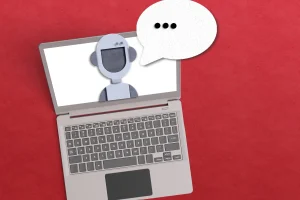
In the era of advanced AI, tools like ChatGPT have revolutionized the way we interact with technology. However, with the rise of AI-generated content, the need for accurate detection mechanisms has become crucial. This brings us to an essential question: Are ChatGPT detectors accurate? In this blog, we will delve into the workings of these detectors, their accuracy, and their implications.
Understanding ChatGPT Detectors
What Are ChatGPT Detectors?
ChatGPT detectors are specialized tools designed to identify text generated by AI models like ChatGPT. These detectors are essential for distinguishing between human-written and AI-generated content. They are used in various applications, including academic settings, content creation platforms, and more.
How Do ChatGPT Detectors Work?
These detectors typically analyze linguistic patterns, sentence structure, and other text features to determine the likelihood that a piece of content was generated by an AI. They use machine learning algorithms and large datasets of both human-written and AI-generated text to make these determinations.
The Accuracy of ChatGPT Detectors
Factors Influencing Accuracy
Several factors influence the accuracy of ChatGPT detectors:
- Training Data: The quality and diversity of the training data significantly impact the detector's performance.
- Algorithm Complexity: More sophisticated algorithms tend to provide better accuracy.
- Evolving AI Models: As AI models become more advanced, detectors need to keep up with these changes to remain effective.
Evaluating Accuracy
Accuracy can be measured in several ways, including precision, recall, and F1 score. Precision refers to the number of true positives divided by the total number of positives predicted by the detector. Recall is the number of true positives divided by the total number of actual positives. The F1 score is the harmonic mean of precision and recall.
Recent studies suggest that while ChatGPT detectors can be quite effective, they are not foolproof. They can sometimes misclassify human-written text as AI-generated and vice versa. This highlights the need for continuous improvement and adaptation.
Challenges and Limitations
False Positives and False Negatives
One of the significant challenges faced by ChatGPT detectors is the occurrence of false positives and false negatives. False positives occur when human-written text is incorrectly classified as AI-generated, while false negatives happen when AI-generated text is mistaken for human-written.
Adaptation to New AI Models
As AI models like ChatGPT evolve, they become more sophisticated in mimicking human language. This poses a challenge for detectors, which must continually adapt to recognize the nuances of newer models.
Ethical Considerations
The use of ChatGPT detectors also raises ethical questions. For instance, relying too heavily on these detectors could lead to unfair judgments, particularly in academic or professional settings. It's essential to balance the use of these tools with human judgment.
Practical Applications of ChatGPT Detectors
Academic Integrity
In educational institutions, ChatGPT detectors help maintain academic integrity by identifying AI-generated content in student submissions. This ensures that students are evaluated based on their own work.
Content Creation and Verification
For content creators and editors, these detectors are valuable for verifying the originality of articles, blogs, and other written content. They help maintain content quality and authenticity.
Social Media and Online Platforms
Social media platforms and online communities can use ChatGPT detectors to identify and manage AI-generated content, ensuring a more authentic user experience.
Enhancing the Accuracy of ChatGPT Detectors
Continuous Training and Updates
To enhance accuracy, ChatGPT detectors must undergo continuous training and updates. This involves incorporating new data and refining algorithms to keep pace with evolving AI models.
Collaboration with AI Developers
Collaboration between AI developers and detector developers can lead to better detection tools. By understanding the intricacies of AI models, detector developers can create more robust algorithms.
User Feedback and Reporting
Incorporating user feedback and reporting mechanisms can also improve detector accuracy. Users can report false positives or negatives, helping developers fine-tune the detectors.
The Future of ChatGPT Detectors
Advances in AI and Detection Algorithms
The future holds significant potential for advances in both AI models and detection algorithms. As AI becomes more sophisticated, detection tools will also evolve, becoming more accurate and reliable.
Integration with Other Technologies
Integrating ChatGPT detectors with other technologies, such as plagiarism checkers and content management systems, can enhance their effectiveness and provide comprehensive solutions.
Ethical and Regulatory Frameworks
Developing ethical and regulatory frameworks for the use of ChatGPT detectors is crucial. These frameworks can guide the responsible use of detection tools and ensure fairness in their application.
Are ChatGPT detectors accurate? The answer is nuanced. While they offer valuable insights and can effectively identify AI-generated content, they are not without limitations. Continuous improvement, collaboration, and ethical considerations are essential for enhancing their accuracy and ensuring their responsible use.
As AI technology continues to evolve, so too will the tools we use to understand and manage it. By staying informed and adaptable, we can harness the potential of both AI models like ChatGPT and the detectors that help us navigate this complex landscape.
For further reading on AI detection and its implications, check out OpenAI's blog and AI ethics resources.








